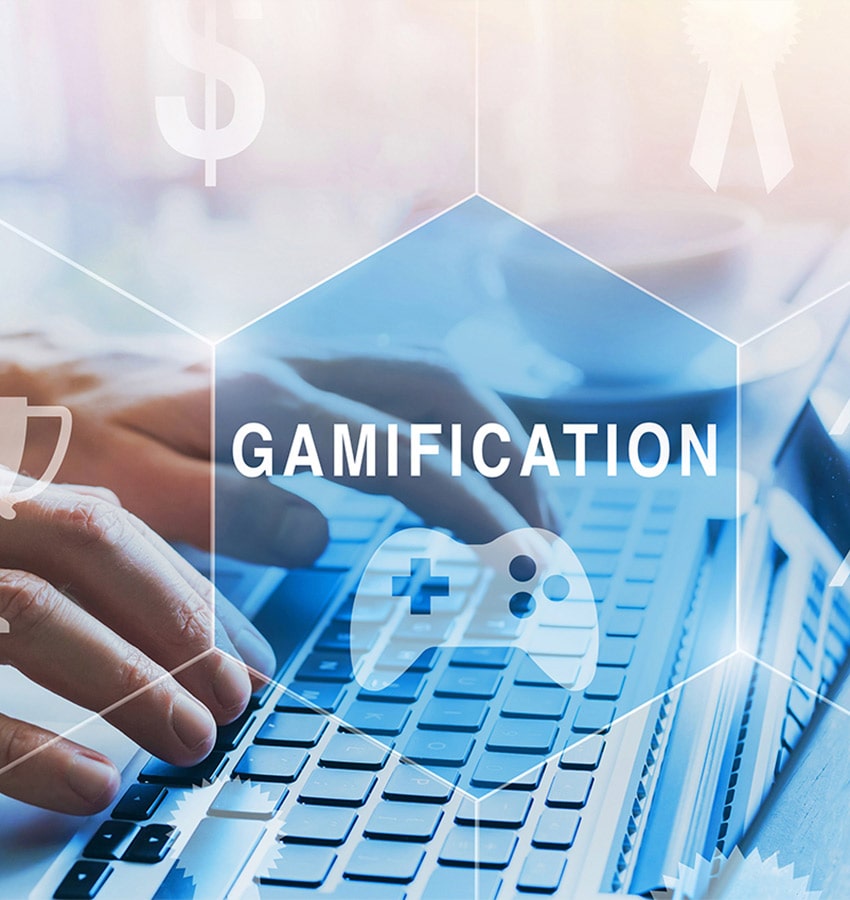
Marketing is constantly evolving with the world it inhabits. There are tried and tested tactics, flash in the pan ideas, misdirected initiatives. The systems founded on buzzwords in today’s marketing scene. With the ever-changing domains of technology, culture, business, and so on all having an impact on how Marketing is received. Marketers must be willing to venture into new terrain in order to boost their ROI.
What is the role of Gamification in Marketing?
Gamification solutions can be used in playable commercials to combine ad units with an interactive game or to incorporate gaming features in a non-gaming context. Giving clients an immersive, engaging, and exciting experience with your company can help them remember your name. Which is the most significant benefit of a gamified campaign.
For those who are still on the fence or are completely unaware of the benefits of upgrading your next campaign with elements of gamification, a list of some of the stronger attributes Gamification solutions may bring is provided below.
Let’s see Role of Gamification in Marketing
1. It’s Fun!
Let’s start with the most obvious. Simply said, games provide consumers with entertainment and delight. Games are a sort of entertainment that speaks to the very fabric of humanity, whether it is to pass the time or as a form of escapism.
We are sociable beings with a strong desire for adventure, achievement, and triumph. All of this is possible within the safety and accessibility of a game. To summarize, games enable individuals to have fun, and fun is marketable.
2. Engage with the audience
One of the most important aspects of Gamification solutions is its capacity to generate quantitative interaction. Unlike traditional marketing, games cannot appear unexpectedly in user feeds to capture a user’s attention; instead, users are given the option and incentive to play the game, which means that any engagement from that point forward comes proactively from the user – they are in control and choose to interact with the company.
When users play games and unwittingly connect with businesses, there is a chance for businesses to display their messages and brand in a variety of ways during the user’s gaming. Video cannot compete with the amount of involvement elicited by games.
In an age when people turn to screens to pass the time, most users do not consider the games they play to be marketing at all. Games may provide kids with a brief burst of engaging exercise while simultaneously raising product awareness and providing businesses with new lead information.
3. Economically Efficient
Most marketers agree that the budget necessary for traditional marketing might be exorbitant, depending on the brand’s reach. The resources necessary from both internal departments and independent hiring to achieve projected results can be both overwhelming and costly. Whereas Gamify’s award-winning software platform includes technologies that allow businesses to track customer traffic and lead information.
One of the most common reasons for Gamification’s rocky start is marketers’ misperception that developing a marketable game is both costly and time-consuming. This may have been true when smartphone technology first became widespread; however, this is no longer the case.
4. Access Across Multiple-Platforms
Most people nowadays own many gadgets, all of which have internet, social media, and app access. Games can be applied anywhere these elements can be found. Games can be designed and changed to fit any device, including mobile phones, tablets, laptops, and desktop computers, expanding the reach of a Gamification campaign to infinity.
5. GDPR-Aligned Data Collection
Nowadays, marketing is centred on generating more leads and updating database information. The good news is that, in light of the new GDPR structure, our games can assist you in gathering the information you seek in a GDPR-compliant manner.
Any post-game information entry from a user relating to leaderboards and prize redemption is done in accordance with the new GDPR structure.
The platform can collect information on the user by marketing through games that operate exclusively on online servers. The amount to which the information field gathers is totally dependent on the company and its goals. When the elements of gamification collect all player metrics, and the corporation can use this knowledge for additional marketing and business activities.
6. Wide Reach
Games are multigenerational, appealing to both young and old. If a company wants to appeal to people of all ages, games are currently the most accessible way to reach such a diverse group of people.
To give you an idea of why mobile gaming is so profitable, 80 percent of smartphone users play games on their phone, with nearly half of them playing games every day, putting in roughly 1-2 hours of gameplay per day.
These figures illustrate that the market is broad and diverse, and when combined with the incorporation of smart gadgets into daily life, it is clear that any target market a firm is going for is well within the grasp of Gamification.
In conclusion,
Consumers today prefer to do business with companies they recognize and trust. When a consumer is able to interact with a firm and other users through a game, it activates the social urge in most consumers, resulting in a positive community view of the brand. this explains well the Role of Gamification in Marketing
Human-centred design components in Gamification campaigns, such as the possibility for social media shares, create a space for the best form of advertisement: a satisfied client who tells others about their experience.
If you want to implement gamification solutions to your brand, Manipal Digital is the best place to start. We offer multiple services including gamification, AR, and more to help your brand grow.



